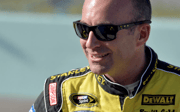Do Bright Car Headlights Pose a Safety Risk? Motorists Divided
By
- Replies 38
It's no secret that driving is a necessary part of our daily lives, from errands and grocery trips to visiting loved ones, road trips and weekend getaways.
But with great power comes great responsibility - in this case, the responsibility is our safety.
Believe it or not, the World Health Organisation (WHO) reports that over 1.3 million people die yearly from road traffic accidents.
That's why we must prioritise safety whenever we hit the road. This means ensuring our vehicle is in tip-top shape, following traffic laws, avoiding distractions (yes, that means putting down the phone), and keeping an eye out for our fellow drivers.
Additionally, we must adapt our driving to changing conditions because the road can be unpredictable.
Speaking of unforeseeable circumstances, one issue divides motorists — the use of bright headlights.

Recently, a motorist raised this issue on social media by asking for the opinions of other drivers.
‘Bright white car headlights should be banned, change my mind,’ they wrote in a post on Reddit.
‘These things are so bloody dangerous. If you are driving towards me, I can’t see anything. I am absolutely blinded by the lights in front of me.’
‘If you’re driving behind me, I still can’t see anything.’
The motorist then questioned the legality of the headlights, asking whether this feature could ‘have been the cause of accidents in the past’.
The post captured the attention of many, who shared their experience with the ‘blinding’ lights.
One user wrote: ‘I totally agree; they're everywhere too. I actually thought at first I was being blasted by high beams until I saw it everywhere.’
‘I have been down this path recently looking for headlight brightness or wattage laws for QLD,’ another said.
‘Unfortunately, I could not find any laws around the brightness or what wattage you are allowed to have your headlights at.’
A third chimed in: ‘A lot of the time, it seems to be people constantly running their high beams without a care in the world.’
‘Can always tell on cars that have separate low and high bulbs and run them together for the high beams. A ton of it going on on super well-lit roads in the inner city.’
One motorist said they empathise with the challenges of winter driving. With early afternoon darkness and adverse weather conditions such as heavy rain, fog, or slushy snow, driving becomes difficult.
Unfortunately, the situation is made worse by inexperienced drivers or newcomers who use HID headlights, hi-beams, or full-light racks.
Despite the assumption that more light improves visibility, these drivers need to realise that blasting light into dense fog, shiny snow, or refracting rain only exacerbates the already nightmarish conditions of daily commutes.
Others pointed out that the problem did not lie with the headlights but with the angle at which they were positioned.
One person wrote: ‘It's not the lights. It's the cut-off level that isn't set properly. The other car needs to dial the angle lower.’
‘So I found on my car I can control the angle. I wouldn’t be surprised if some people have adjusted their upwards (blinding those in front of them) and not realised it,’ another said.
A third explained: ‘A lot of aftermarket HID lights aren't installed properly, and it's worse on 4x4s because they are higher.’

Some confessed to opting for ‘retaliatory driving’ when they encounter cars with their headlights on, with one user admitting: ‘I start driving at 20 under the speed limit when that happens. Do you want to use wanker lights? Have fun sitting behind me for the next couple of ks at 30km/h.’
One person went as far as to say that they wear their sunglasses when they drive at night so that they can see the ‘light right before my eyes’.
Members, we do not encourage these acts as engaging in such behaviour could lead to an accident and cause more harm.
Fortunately, one commenter expressed concern regarding the retaliatory driving responses suggested by a few individuals in the discussion, ending the discussion about possible ways to counter drivers with headlights on.
They believed that such actions were not only unsafe but also irresponsible. The commenter also urged drivers to remember that other drivers cannot read their minds and may not understand what they are retaliating against.

Members, this is a contentious issue worth discussing - what are your thoughts on bright white car headlights? Should they be banned, or is there something else that can be done to keep our roads safe? Share your views in the comments below!
But with great power comes great responsibility - in this case, the responsibility is our safety.
Believe it or not, the World Health Organisation (WHO) reports that over 1.3 million people die yearly from road traffic accidents.
That's why we must prioritise safety whenever we hit the road. This means ensuring our vehicle is in tip-top shape, following traffic laws, avoiding distractions (yes, that means putting down the phone), and keeping an eye out for our fellow drivers.
Additionally, we must adapt our driving to changing conditions because the road can be unpredictable.
Speaking of unforeseeable circumstances, one issue divides motorists — the use of bright headlights.

Motorists are divided over the safety of bright car headlights. Credit: Pexels/KoolShooters.
Recently, a motorist raised this issue on social media by asking for the opinions of other drivers.
‘Bright white car headlights should be banned, change my mind,’ they wrote in a post on Reddit.
‘These things are so bloody dangerous. If you are driving towards me, I can’t see anything. I am absolutely blinded by the lights in front of me.’
‘If you’re driving behind me, I still can’t see anything.’
The motorist then questioned the legality of the headlights, asking whether this feature could ‘have been the cause of accidents in the past’.
The post captured the attention of many, who shared their experience with the ‘blinding’ lights.
One user wrote: ‘I totally agree; they're everywhere too. I actually thought at first I was being blasted by high beams until I saw it everywhere.’
‘I have been down this path recently looking for headlight brightness or wattage laws for QLD,’ another said.
‘Unfortunately, I could not find any laws around the brightness or what wattage you are allowed to have your headlights at.’
A third chimed in: ‘A lot of the time, it seems to be people constantly running their high beams without a care in the world.’
‘Can always tell on cars that have separate low and high bulbs and run them together for the high beams. A ton of it going on on super well-lit roads in the inner city.’
One motorist said they empathise with the challenges of winter driving. With early afternoon darkness and adverse weather conditions such as heavy rain, fog, or slushy snow, driving becomes difficult.
Unfortunately, the situation is made worse by inexperienced drivers or newcomers who use HID headlights, hi-beams, or full-light racks.
Despite the assumption that more light improves visibility, these drivers need to realise that blasting light into dense fog, shiny snow, or refracting rain only exacerbates the already nightmarish conditions of daily commutes.
Others pointed out that the problem did not lie with the headlights but with the angle at which they were positioned.
One person wrote: ‘It's not the lights. It's the cut-off level that isn't set properly. The other car needs to dial the angle lower.’
‘So I found on my car I can control the angle. I wouldn’t be surprised if some people have adjusted their upwards (blinding those in front of them) and not realised it,’ another said.
A third explained: ‘A lot of aftermarket HID lights aren't installed properly, and it's worse on 4x4s because they are higher.’

Some pointed out that the position of the headlights is to blame for its safety risk. Credit: Pexels/Aleksandar Pasaric.
Some confessed to opting for ‘retaliatory driving’ when they encounter cars with their headlights on, with one user admitting: ‘I start driving at 20 under the speed limit when that happens. Do you want to use wanker lights? Have fun sitting behind me for the next couple of ks at 30km/h.’
One person went as far as to say that they wear their sunglasses when they drive at night so that they can see the ‘light right before my eyes’.
Members, we do not encourage these acts as engaging in such behaviour could lead to an accident and cause more harm.
Fortunately, one commenter expressed concern regarding the retaliatory driving responses suggested by a few individuals in the discussion, ending the discussion about possible ways to counter drivers with headlights on.
They believed that such actions were not only unsafe but also irresponsible. The commenter also urged drivers to remember that other drivers cannot read their minds and may not understand what they are retaliating against.
Key Takeaways
- The World Health Organisation (WHO) reports that over 1.3 million people die each year from road traffic accidents.
- The use of bright headlights has recently been divisive among motorists.
- HID headlights, hi-beams, or full-light racks made visibility worse in changing conditions such as dense fog, shiny snow, or refracting rain.
- One commenter expressed concern regarding retaliatory driving and suggested ways to counter drivers with headlights on that were both safe and responsible.
Members, this is a contentious issue worth discussing - what are your thoughts on bright white car headlights? Should they be banned, or is there something else that can be done to keep our roads safe? Share your views in the comments below!







